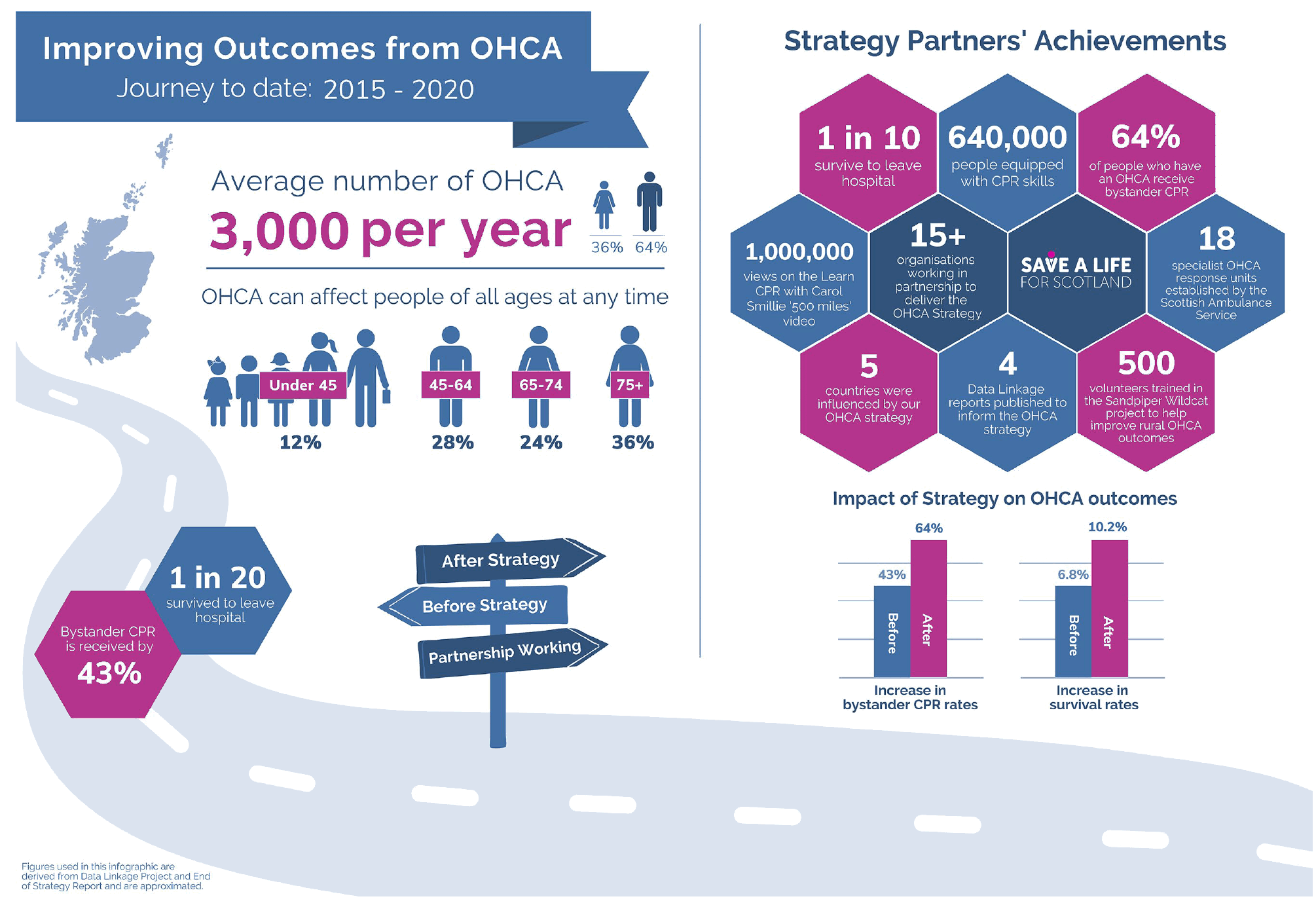Out of hospital cardiac arrest: strategy 2021 to 2026
Scotland’s out-of-hospital cardiac arrest (OHCA) Strategy 2021 to 2026 reflects progress made since throughout the lifetime of the previous strategy (2015 – 2020), and sets out the next steps we will take to ensure as many people as possible survive an out-of-hospital cardiac arrest in Scotland.
1. Foreword
Every year, over 3,000 people in Scotland experience an out-of-hospital cardiac arrest (OHCA). A cardiac arrest is when the heart stops pumping blood around the body, commonly because of a problem with the electrical signals in a person's heart. It is a significant healthcare challenge and addressing it is a priority for the Scottish Government.
Throughout the last five years, the Save a Life for Scotland (SALFS) partnership has equipped over 640,000 people, around 11% of the population of Scotland, with CPR skills. At the launch of Scotland's inaugural Out-of-Hospital Cardiac Arrest Strategy in 2015 only around 1 in 20 people in Scotland who experienced an OHCA survived to be discharged from hospital. By the end of that strategy in 2020, this had doubled to 1 in 10 people. This is significant progress, of which we should be proud. It means that we begin this refreshed strategy with a solid foundation on which to continue our work.
Whilst we rightly celebrate those achievements, there remains more to do. We know from international experience that even higher rates of survival are achievable. We can continue to learn from our international colleagues and apply examples of best practice here in Scotland. Likewise, we can share our experiences of improving bystander CPR rates and survival from OHCA to help other countries do the same.
We also know that there is more that we must do to address inequalities within bystander CPR rates and outcomes from out-of-hospital cardiac arrest across Scotland. To do this, our refreshed strategy will continue our efforts to equip as many people as possible with the skills necessary to save the life of someone having a cardiac arrest, but will include a particular focus on reaching communities where we know those inequalities exist.
In order to ensure as many people as possible survive an OHCA, this strategy follows what is known as the 'Chain of Survival'. The Chain of Survival describes the crucial elements required to save a life when someone is in cardiac arrest. These elements are: community readiness and early recognition that a cardiac arrest is happening; early cardiopulmonary resuscitation (CPR); early defibrillation to restart the heart; timely hospital care, and appropriate aftercare. Through the implementation of this strategy, we will work to improve all aspects of the Chain of Survival in Scotland. We will also focus on how the effective use of data can support us in shaping the quality of care delivered to communities across Scotland.
I would like to offer my thanks and appreciation to all who have been involved in delivering the ambitious aims set out in Scotland's original Out-of-Hospital Cardiac Arrest Strategy, to those who have supported this refreshed strategy and, of course, to every member of the public who has learned CPR and those who have stepped forward to help someone experiencing a cardiac arrest.
Mairi Gougeon, Minister for Public Health and Sport

Contact
Email: Clinical_Priorities@gov.scot
There is a problem
Thanks for your feedback